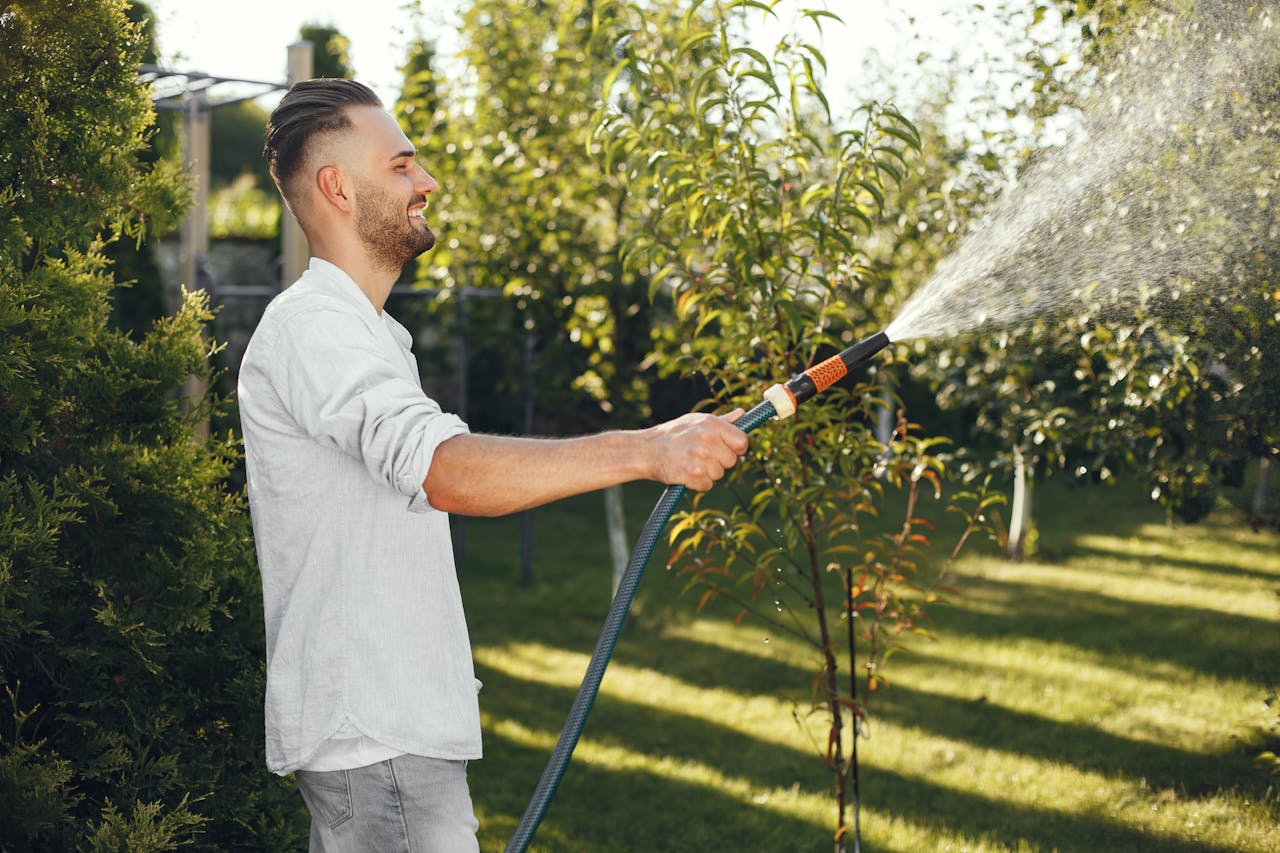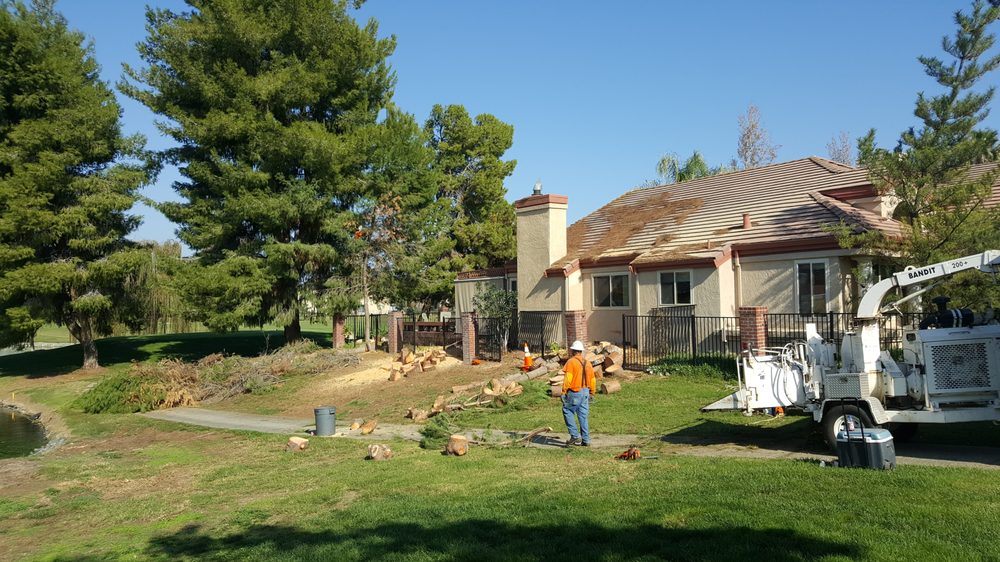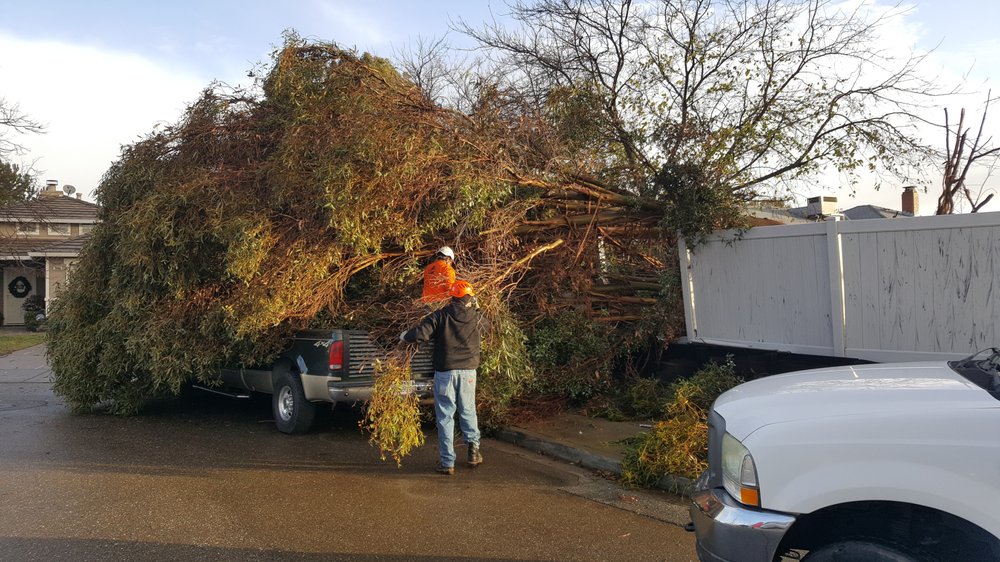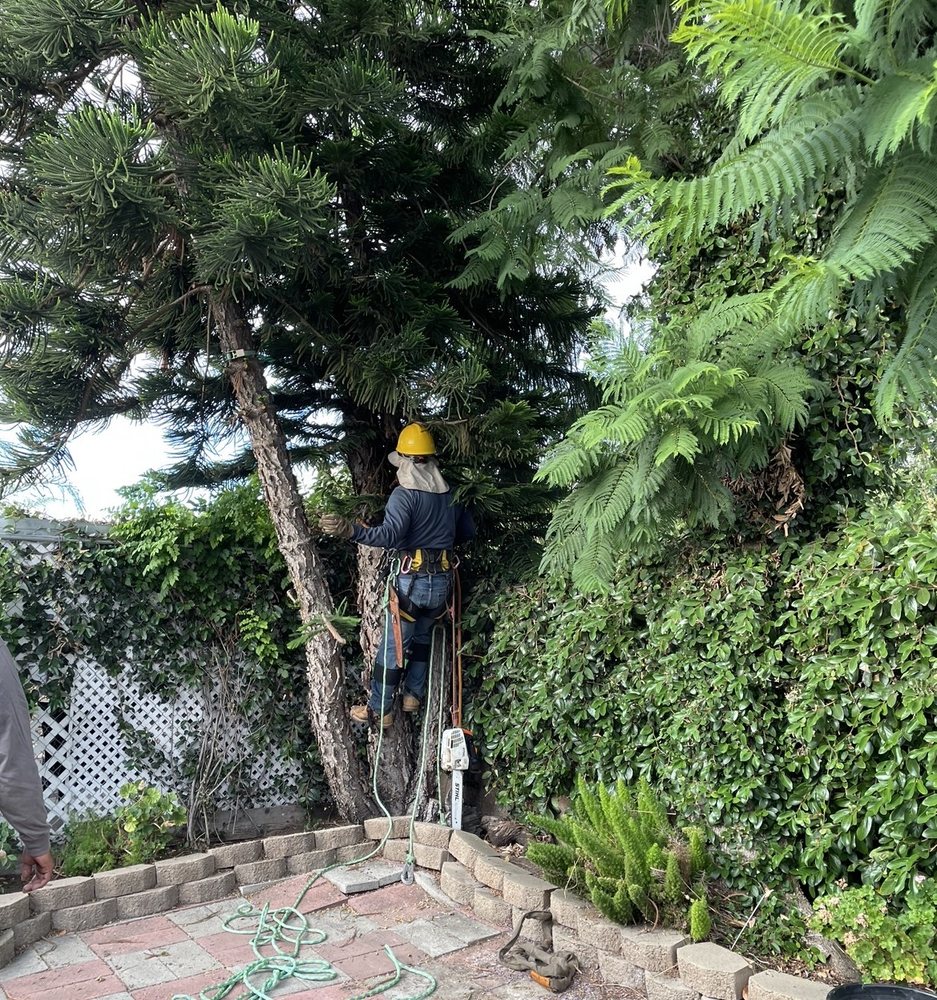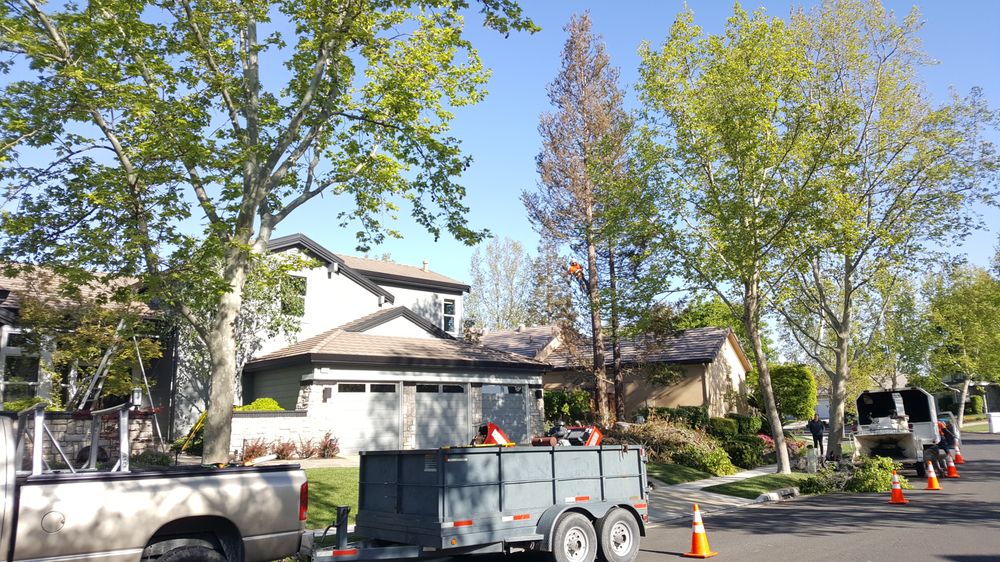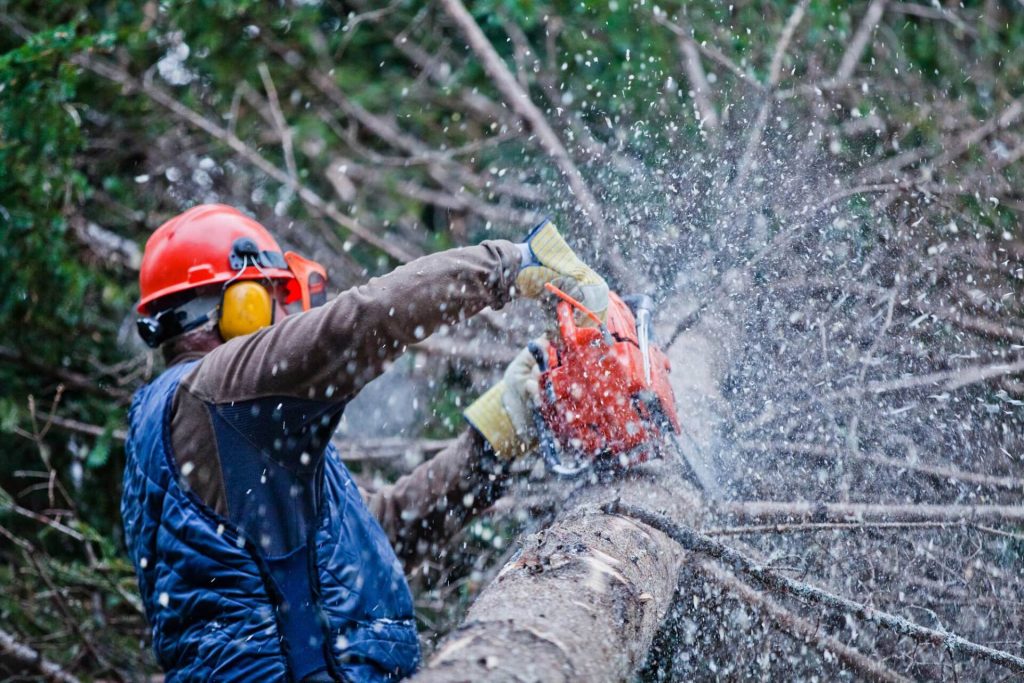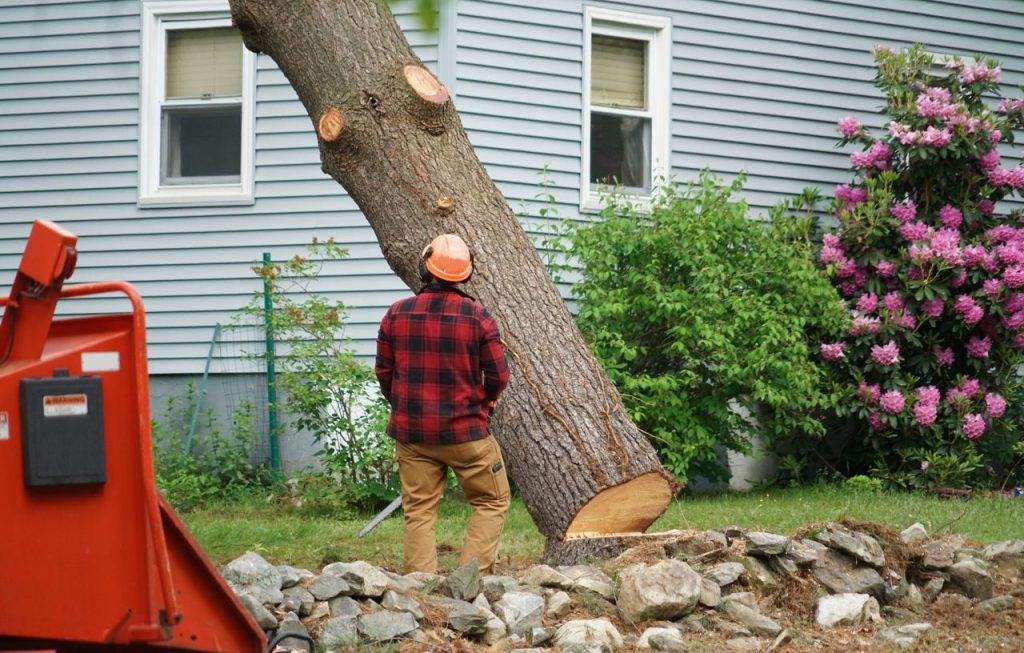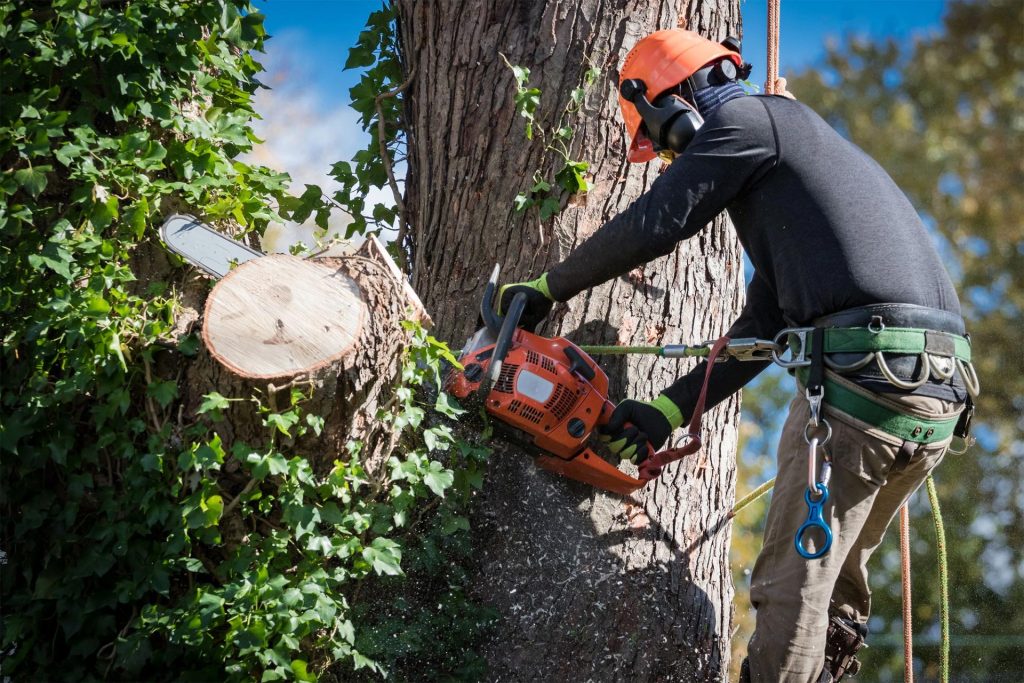Proper care and concern for trees enhance the beauty and value of any property. Learning to care for them is the best way to ensure they stay healthy and thrive. Simple DIY tree care projects, such as regular watering, mulching, and pruning small branches, are easily within the reach of most homeowners.
These preventive maintenance tasks help trees thrive and avoid problems down the road. Knowing when it’s time to call a pro is just as crucial. More complicated pruning, disease, or pest infestations need an expert touch so you don’t cause additional harm.
Tree care pros have the experience, training, and equipment to perform dangerous tasks safely. Finding the right balance between your DIY efforts and when to call in the pros will keep your trees thriving and healthy! This new approach benefits you with saved time, resources, and peace of mind.
Knowing when to call a professional protects you and your trees.
Understanding Basic Tree Care
Caring for trees doesn’t have to be complicated. Small actions can have huge impacts. Watering, mulching, and pruning are just a few of the basic things that keep trees happy.
A regular watering routine is important, particularly during droughts. As a general rule of thumb, trees need about 10 gallons of water for every inch of trunk diameter. Monitoring soil moisture will help you determine when to water, avoiding excess moisture saturation and drought stress. Creating a checklist tailored to your specific tree species and local climate is also helpful.
Mulching has many benefits including keeping soil moist, controlling weeds, and maintaining soil temperature. Organic mulches contribute to soil health over time as they decompose. For maximum benefit, spread 2-4 inches of mulch in a donut shape around the base of the tree.
Just be sure to keep it clear from the trunk! Removing weeds regularly stops competition for nutrients and water, which benefits young and mature trees.
Pruning entails using sharp tools to eliminate any dead or damaged branches which can help other branches grow and flourish. Proper light pruning can create form without inflicting stress. Maintaining a regular pruning schedule, combined with diligent record keeping, will ensure a tree’s progression can always be followed.
Fertilization is an important piece of tree care, with spring or fall being the ideal time to put fertilizer down. This promotes vigorous growth that allows trees to better weather storms. With some general DIY care, simple tools such as pruning shears and loppers will do the job.
However, professionals use more advanced equipment for more complicated jobs. Identifying tree health regularly can save time and money as many issues can be avoided.
It’s common knowledge among arborists that 90% of tree problems can be prevented through proper maintenance. Be it leafy hardwoods or evergreen conifers, proper care will keep these trees healthy and vibrant.
Essential Tree Maintenance
Caring for trees involves a regular, informed practice of watering, mulching, and pruning. As a general rule of thumb, trees should receive about 10 gallons of water per inch of trunk diameter per watering session.
Mulching has numerous benefits such as retaining moisture, suppressing weeds, and insulating the soil. Applying 2 to 4 inches of mulch, without piling it against the trunk, helps conserve water and protect roots from temperature extremes.
Proper Feeding Methods
Selecting the best fertilizer will vary based on tree species and existing soil conditions. To maximize efficacy, fertilizers should be used by plant growth cycles, which coincide with seasonal shifts.
A properly timed feeding schedule with the nutrient application when trees need it the most will provide the best results. Monitoring tree response to fertilization can guide future applications, ensuring your trees remain healthy and vibrant.
Regular Inspection Practices
Routine visual inspections are key to identifying pests, diseases, or environmental damage. Maintaining a record of inspection results is important for monitoring changes in tree health over time.
A detailed maintenance checklist prevents any aspect from falling through the cracks. If you encounter anything abnormal, it’s best to call in a professional to provide expert care.
Tree Protection Strategies
Tree guards protect young trunks from chewing and rubbing. Knowing the landscape around you will help inform what your tree might be up against.
Learn to recognize common environmental threats to trees, like Colorado’s dry winters and beetle outbreaks. Having an understanding of best practices is key, particularly during new construction or landscaping, to help make sure your trees are protected.
Common Tree Issues And Fixes
Being able to identify these three issues at the first signs can mean all the difference. Symptoms such as wilting leaves or discolored bark are a sure sign something is wrong. Consistent upkeep through things like general pruning and proper watering ensures trees stay vibrant and minimizes potential dangers.
Signs of overwatering include yellowing leaves and standing water, while signs of drought stress include curling leaves and browning tips. Young trees benefit from regular pruning each year to encourage healthy growth. Larger, mature trees typically need to be professionally pruned every 2-5 years to manage deadwood and prevent overgrowth.
Mulching is a big plus since it retains moisture and insulates the soil.
Identifying Common Pests
Identifying pests like beetles or caterpillars relies on spotting signs like chewed leaves or unusual growths. Preventative measures include regular inspections and keeping the area clean of debris. Document pest sightings and treatments to evaluate their effectiveness.
Understanding pest life cycles helps anticipate outbreaks, allowing timely interventions.
Treating Mild Diseases
Catching early signs of diseases, like weird lesions or growths, means they can be treated quickly. Fungicides can be used as a last resort but must be targeted and specific to the disease. A disease management plan with ongoing vigilance allows for quick treatment.
By documenting disease events we can better inform what care looks like in the future, pivoting tactics when needed.
Addressing Nutrient Deficiencies
Most nutrient deficiencies will first appear as yellowing leaves. Soil tests will show you the existing levels of nutrients, allowing you to know what to add. A focused amendment strategy directly targets the most important shortcomings.
Monitoring tree recovery following treatment will help you understand if the intervention worked. Keep in mind that 90% of tree issues can be avoided with the right maintenance.
When To Call A Professional
Knowing when to call a pro is an important part of tree care. While there are quite a few things you can do yourself, there are times when it’s just best to call in the professionals. Here’s a closer look at the situations where you need a pro.
Tree Removal Necessities
Determining if a tree should be removed means considering its health. Trees with a noticeable lean or evidence of rotting may pose a danger. A removal checklist can be a useful guide to establish your need for removal, taking into account the tree’s location and health.
Professionals do the removal safely, reducing risk by using methods perfected through experience and training.
Handling Heavy Pruning
When heavy pruning is necessary, knowing when to call a pro and what’s at stake is key. Planning means choosing the appropriate tools and recording pruning decisions so that recovery can be monitored over time.
When you’re ready to incorporate more advanced techniques, consulting professionals will help you ensure that tasks are executed safely and effectively.
Diagnosing Serious Diseases
To know when a tree is afflicted with a serious disease requires a professional diagnosis. Any symptoms such as unusual leaf dropping or bark peeling should be a signal to call a professional.
When DIY treatments don’t do the trick, you may need to get in touch with professionals for maintenance treatments.
Managing Emergency Situations
Storm damage or fallen branches should be anticipated with a prepared emergency plan. A checklist for evaluating your home’s damages and deciding what to do first is essential.
Getting professional help as soon as possible is key, and recording these incidents helps determine what to do next.
Professionals such as 770-Tree-Guy can provide safe, effective solutions while protecting your utility lines and controlling pests.
Qualified arborists have the training, experience, and equipment to take care of these things properly. Routine cleaning and examinations can ward off the majority of all problems.
For more complex jobs, expert advice is indispensable. Reach out to experts, do your homework, and plan to attempt easier projects on your own next year.
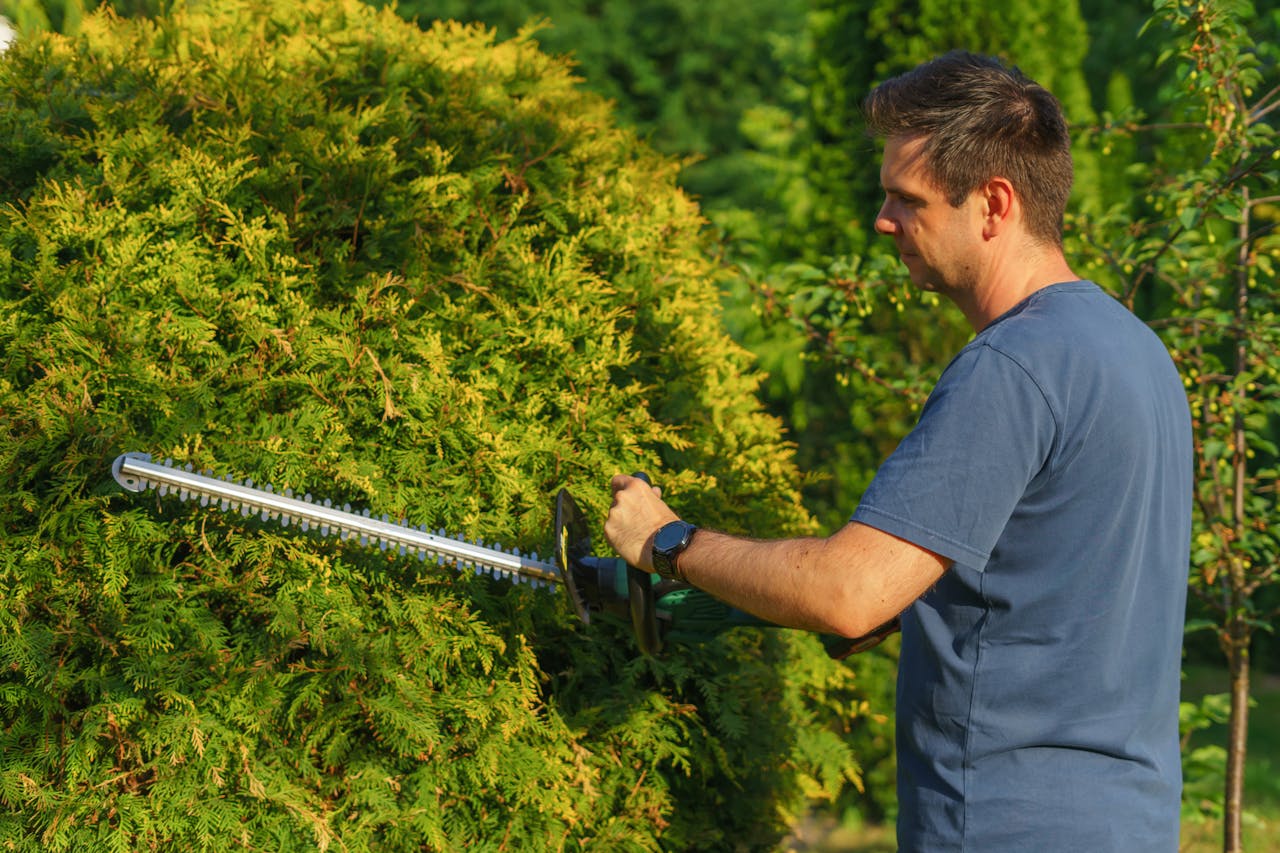
Timing For Professional Help
Recognizing Hazardous Conditions
Identifying these potential issues early on can prevent major headaches in the future. If you are observing cracked bark or significant dieback, these are cause for alarm. Create a checklist with items like overhanging trees or roots sticking out as a starting point.
Failure to pay attention to these warning signals can lead to disaster, such as dropped branches or trees failing outright. Take detailed notes on everything you discover. This is particularly useful when you’re seeking a pro’s advice, providing them with a clear snapshot of the current state of affairs.
Seasonal Considerations
Read on to learn why timing is so important in tree care. In areas like Portland, where some trees are vulnerable to certain diseases, winter pruning limits stress and the spread of disease. Create a seasonal checklist for activities such as annually pruning young trees to encourage proper growth, and use it as a guide.
Mature trees require routine pruning every 2-5 years to remove deadwood. Pay attention to weather events that could impact your trees. Adapt your care as seasons pass and as your trees react to your care.
Assessing Tree Health Risks
Consistency in monitoring allows those risks to be identified and addressed before they become threats. There’s a simple template that you can use to start marking up what you observe and what needs to be done.
Please keep in mind that environmental conditions such as soil and climate have a significant impact on tree vitality. Maintaining documentation year after year can help identify patterns of movement.
When you notice disease or pest infestation, move as quickly as possible to control the threat of damage. For difficult tasks or if you have any doubts, contacting a certified arborist is smart. They do this while performing large-scale, fine-tuned, complex pruning and hazardous tree work around power lines.
DIY Tree Care Benefits And Drawbacks
Advantages Of Self-Care
DIY tree care can be cost-effective. You avoid the high costs of hiring tree care professionals often incur.
Plus, there’s a true joy derived from DIY tree care. You get to enjoy the fruits of your labor, both literally and figuratively.
Basic maintenance tasks such as watering, mulching,g, and some minor pruning are easily tackled by the average homeowner. Watching your trees flourish in your care is incredibly rewarding, instilling confidence for future DIY projects.
Potential DIY Risks
DIY tree care can be hazardous. Failure at the stop is an accident waiting to happen.
Falling limbs can result in serious injuries, even death. Safety is most important, so having a checklist is essential.
By practicing good techniques, you help ensure that you don’t cause damage to your trees. Simple mistakes such as misidentifying a pest can add up very quickly.
Though it’s unfortunate, learning from near-misses or accidents will make you a better arborist and log clearer. Keep in mind that some DIY tasks are perfectly safe, while others such as complex pruning should be handled by trained professionals.
Equipment Safety Concerns
So, the story begins with the tools you use. Pruning ladders, for example, provide a much more stable platform through a wide base and three-point contact.
This added stability greatly decreases fall risk. Make sure to take proper safety precautions such as wearing gloves and protective eyewear.
Properly maintaining your tools helps them perform better and protects you from injury. Don’t use worn-out or incorrect tools to avoid unnecessary injuries.
Preventive and routine maintenance inspections are a great way to ensure your machines continue to operate at their best.
Pros Of DIY Care | Cons Of DIY Care |
Cost savings | Risk of personal injury |
Personal satisfaction | Possible tree damage |
Basic tasks doable | Advanced techniques risky |
Key DIY Tree Care Tips
Know Your Trees
Knowing how to identify trees is the first step to proper care. Regardless, each tree is unique with its own specific needs, so understanding what you’re working with is key. Develop a quick identification guide that staff and volunteers can use to identify species and learn about their specific needs.
For example, some trees in Portland, such as maples, respond well to late-summer pruning. By documenting these characteristics, we can establish a baseline and better monitor their health. Teaching your neighbors to identify tree species creates a neighborhood of fellow, informed tree enthusiasts.
Safe Pruning Practices
While proper pruning is important for tree health, safety should come first. Start with our DIY Tree Care Tips Checklist for tools and workspace prep. Be sure to start with dead, damaged, or diseased branches, and make your cuts just outside the branch collar.
Annual pruning for young trees will help set them up with a single leader, and mature trees require care every 2-5 years. Winter is the best time for most Portland trees, causing less stress and the risk of spreading disease. By sharing these practices, we can empower everyone to care for their trees in the most responsible way possible.
Effective Watering Techniques
Watering approaches should consider species of tree and local climate. This might be an overwatering situation, which will be noticeable with yellowing leaves and waterlogged soil. Water trees deeply and slowly.
Try a soaker hose. Try to provide about one gallon of water each week for every inch that the tree is in diameter. Regular public schedules build trust and accountability. When you share these techniques, you’re doing your part to create a community of smart caregivers, improving the health of trees everywhere.
Conclusion
Caring for trees on your own saves money and provides a sense of accomplishment. Regular maintenance like pruning and watering helps your trees thrive. Keeping an eye out for pests or diseases goes a long way to catching issues early on. Some tree care tasks require an expert. For large-scale projects, hiring a tree specialist saves lives and protects trees from damage. Finding that perfect mix of DIY and professional work is essential. Care for your trees by doing what you can and bringing in professionals when the going gets tough. Remember, your trees can’t take care of themselves. If you do your part with regular preventative maintenance, your trees will provide you with years of beautiful shade, beauty, and increased value. Want to provide advanced DIY care for your trees? Join us, take the plunge, and see them thrive!
Take Control Of Overgrown Trees With JC Tree Service
Overgrown trees can quickly turn a beautiful landscape into a safety concern or an eyesore. At JC Tree Service, we specialize in managing overgrown trees for homes and businesses in Brentwood, Antioch, and surrounding areas. Whether your trees require pruning, trimming, or a full risk assessment, our skilled team is here to restore your property’s safety, health, and beauty.
Our overgrown tree services are designed to eliminate hazards posed by heavy or encroaching branches, protect your property from potential damage, and enhance your curb appeal. With regular tree care, we ensure proper growth, prevent risks from weakened limbs, and promote the long-term health of your trees. At JC Tree Service, we focus on eco-friendly practices, offering solutions tailored to your needs while keeping your outdoor space safe, organized, and visually stunning.
Don’t let overgrown trees jeopardize your property’s safety or charm. Contact JC Tree Service today for a free, no-obligation quote. Let us help you bring your landscape back to life with expert tree care!
Disclaimer
The materials available on this website are for informational and entertainment purposes only and not to provide legal or professional advice. You should contact your attorney or home improvement specialist to obtain advice concerning any particular issue or problem. You should not act or refrain from acting based on any content included in this site without seeking legal or other professional advice. The information presented on this website may not reflect the most current home improvement developments. No action should be taken in reliance on the information on this website. We disclaim all liability concerning actions taken or not taken based on any or all of the contents of this site to the fullest extent permitted by law.

